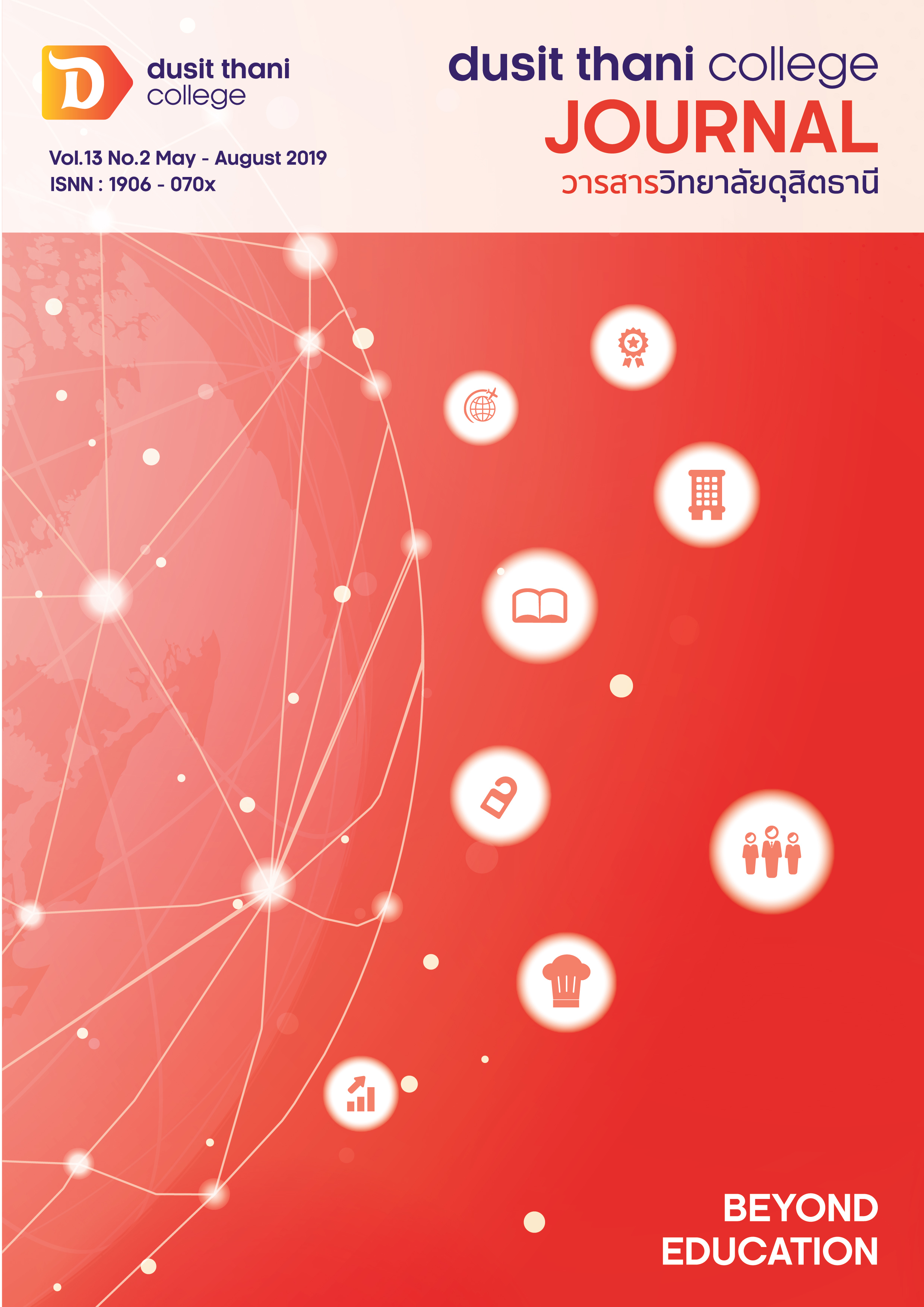การปฏิบัติที่เป็นเลิศในการจัดการท่องเที่ยวแบบคาร์บอนต่ำ : กรณีศึกษาชุมชนในภาคตะวันออกของไทย
Main Article Content
บทคัดย่อ
แนวคิดที่มุ่งพัฒนาแหล่งท่องเที่ยวคาร์บอนต่ำ (Low Carbon Destination) ของชุมชนในภาคตะวันออก ของประเทศไทย เพื่อสงวนเก็บรักษาเสมือน “บ้าน” ของตนให้มีสภาพธรรมชาติที่ดีอย่างยั่งยืน ซึ่งเป็นที่มาของการรณรงค์และริเริ่มโครงการหลากหลายเพื่อลดการปล่อยก๊าซคาร์บอนไดออกไซด์ที่ทำลายสิ่งแวดล้อม บทความวิชาการนี้จึงมุ่งเน้นศึกษาวิธีการปฏิบัติที่เป็นเลิศ (Best Practice) จากการสังเคราะห์ข้อมูลเกี่ยวกับการจัดการท่องเที่ยวแบบคาร์บอนต่ำของพื้นที่ที่มีผลงานดีเด่นเป็นที่ยอมรับ เพื่อให้หน่วยงานอื่นได้นำไปปรับใช้เป็นแนวทางในการปฏิบัติที่ดีที่สุดของตนเองในการจัดการท่องเที่ยวแบบคาร์บอนต่ำ โดยเลือกศึกษาพื้นที่เกาะหมากและชุมชนบ้านน้ำเชี่ยว เนื่องจากทั้ง 2 พื้นที่เป็นพื้นที่ที่ประสบความสำเร็จด้านการจัดการท่องเที่ยวแบบคาร์บอนต่ำ ผลการสังเคราะห์วิธีการปฏิบัติที่เป็นเลิศในการจัดการท่องเที่ยวแบบคาร์บอนต่ำประกอบด้วย องค์ประกอบของการท่องเที่ยวแบบคาร์บอนต่ำ คือ ชุมชนคาร์บอนต่ำ แหล่งท่องเที่ยวคาร์บอนต่ำ ที่พักคาร์บอนต่ำ อาหารคาร์บอนต่ำ กิจกรรมคาร์บอนต่ำ และขนส่งคาร์บอนต่ำ กระบวนการจัดการท่องเที่ยวแบบคาร์บอนต่ำ คือ แผนขับเคลื่อน จิตสำนึก และการบริการ ส่วนปัจจัยที่ส่งผลต่อความสำเร็จในการจัดการท่องเที่ยวแบบคาร์บอนต่ำ ปัจจัยภายในคือผู้นำและคนในชุมชนร่วมมือพัฒนา และปัจจัยภายนอกคือ ภาคีเครือข่าย
Article Details
นโยบายการพิจารณากลั่นกรองบทความ
- บทความวิจัยและบทความวิชาการทุกเรื่องที่จะได้รับการตีพิมพ์ต้องผ่านการพิจารณากลั่นกรองโดยผู้ทรงคุณวุฒิ (Peer Review) ในสาขาที่เกี่ยวข้อง จำนวน 3 ท่าน/บทความ
- บทความ ข้อความ ภาพประกอบและตารางประกอบที่ลงตีพิมพ์ในวารสารเป็นความคิดเห็นส่วนตัวของผู้เขียน กองบรรณาธิการไม่จำเป็นต้องเห็นด้วยเสมอไป และไม่มีส่วนรับผิดชอบใด ๆ ถือเป็นความรับผิดชอบของผู้เขียนแต่เพียงผู้เดียว
- บทความที่จะได้รับการตีพิมพ์จะต้องไม่เคยตีพิมพ์ เผยแพร่ที่ใดมาก่อน และไม่อยู่ระหว่างการพิจารณาของวารสารฉบับอื่น หากตรวจสอบพบว่ามีการตีพิมพ์ซ้ำซ้อน ถือเป็นความรับผิดชอบของผู้เขียนแต่เพียงผู้เดียว
- บทความใดที่ผู้อ่านเห็นว่าได้มีการลอกเลียนหรือแอบอ้างโดยปราศจากการอ้างอิง หรือทำให้เข้าใจผิดว่าเป็นผลงานของผู้เขียน กรุณาแจ้งให้กองบรรณาธิการวารสารทราบจะเป็นพระคุณยิ่ง
เอกสารอ้างอิง
2. Designated Areas for Sustainable Tourism Administration (Public Organization). (2012). Low carbon tourism management in Thailand. Bangkok: Office of the Prime Minister.
3. __________. (2015). Low Carbon Community Management: Ban Nam Chiao. Bangkok:
Office of the Prime Minister.
4. Liu Min. (2011). Study on Low-carbon Tourism Development of Changdao Islandin Low-carbon Economy. Accessed May 22, 2017. Available from http://www. seiofbluemountain.com/upload/product/201112/2011jscx0a15.pdf.
5. Svetasreni, Suraphon. (2012). Low carbon tourism management in Thailand. Bangkok: Office of the Prime Minister.
6. Towprayoon, Sirintornthep et al. (2010). Carbon footprint analysis and management of rice products for carbon label to promote low-carbon economy for climate change mitigation. Bangkok: The Thailand Research Fund.
7. Vargo, S. L., & Lusch, R. F. (2008). Service-dominant logic: continuing the evolution. Journal of the Academy of marketing Science, 36(1), 1-10.
8. Zhang Qingqing and Liu Chunji. (2011). Research on low-carbon tourism consumption intentions of students in Shanghai[J]. Jiangsu Commercial Forum, 8, 24-26.
9. Zhou Gefen. (2013). Research on Low-carbon Rural Tourism Development in Western Minority Regions in China from the perspective of neo institutional economics. Accessed May 22, 2017. Available from http://journal-archieves30 .webs.com/117-125.pdf.


